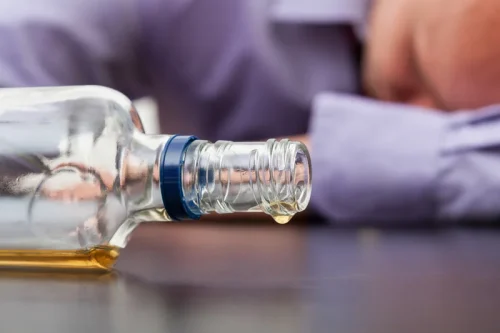
Choice impulsivity, the tendency to make choices that lead to suboptimal, immediate or risky outcomes is often measured using a delay discounting task to assess an individual’s preference for a smaller, immediate reward compared with a larger, delayed reward [112]. Individuals who scored higher in trait impulsivity measures exhibited greater choice impulsivity than their lower trait impulsive counterparts [115]. To probe impulsiveness through fMRI, response inhibition tasks are commonly used, such as the Go/no-go (GNG) task and Stop Signal Task (SST). Such studies have found that adolescents who later transitioned into heavy drinking had lower BOLD activation at baseline and increased activation in frontal regions when subsequently drinking heavily compared with continuous non-drinkers [110,111].
- If you find something abusive or that does not comply with our terms or guidelines please flag it as inappropriate.
- It should be noted that some studies have shown contradicting effects [137–139], indicating that the role of dopamine in alcohol‐mediated behaviours in complex.
- Other causes include gastric bypass surgery, gastric and colon cancer, hyperemesis gravidarum, long-term parenteral feeding, and poor nutrition.
- That’s called a “dopamine deficit state,” and the cycle that leads us there can actually lead to depression, anxiety, irritability and insomnia.
Study finds distinct differences in how the brain releases dopamine in patients with alcohol use disorder
Berman’s research has also found that the effects of alcohol abuse (and subsequent abstinence) differ between men and women. In a recent cross-sectional study, she and other researchers studied the brains of 60 individuals who’d been diagnosed with alcohol use disorder and abstained from drinking for at least four weeks. Clinical assessments revealed that women had higher mood scores than their male counterparts during early sobriety. An April 2013 study found a drug called Nalmefene to be a potential new treatment option for alcohol abuse. Researchers in Germany found Nalmefene to be an effective and safe tool for reducing alcohol consumption in alcohol-dependent individuals.

Distinct sub-second dopamine signaling in dorsolateral striatum measured by a genetically-encoded fluorescent sensor
In the sucrose reward experiment, at days 5–12 of the CSS/CON protocol, BW and food intake were measured daily; mean values of BW and daily food intake were used as re-baseline values for these parameters (re-BBW, re-B-food intake) and applied during testing (Table S1). Employing the MMP library, the researchers were able to screen more than 23,000 single nucleotide mutations across 300 MMP strains and nominate candidate genes within a few days after identifying a line showing dopamine-dependent Swip. The researchers’ initial behavioral screening effort covered about 15% of the MMP library and resulted in the identification of 10 strains, nine of which are now in the queue for new gene identification. Elegans to more efficiently elucidate the genetic, molecular and cellular bases of neural signaling than we could with rodent models.
- Finally, an important caveat to much of the present evidence is the generalizability of small cohort cross-sectional studies.
- These results suggests that certain functional differences in reward processing may predate problematic alcohol consumption.
- As previously mentioned, thiamine is an essential cofactor required for the synthesis and function of several essential enzymes.
Stress-induced plasticity of a CRH/GABA projection disrupts reward behaviors in mice
An operant nose-poke port, enlarged to accommodate the mouse’s head with optic fibre, could be inserted to the left of the feeder on the same side wall; a white LED set into its rear indicated it was active, and operant responses were detected via an infrared motion sensor. The centre-to-centre distance between operant port and feeder port could be set to 55 mm (“near”) or 110 mm (“far”). The set-up was placed within an attenuation chamber into which white noise was presented. When alcohol consumption is abruptly reduced or discontinued, a withdrawal syndrome may follow, characterized by seizures, tremor, hallucinations, insomnia, agitation, and confusion (Metten and Crabbe 1995). Scientists postulate that this syndrome represents the hyperactivity of neural adaptive mechanisms no longer balanced by the inhibitory effects of alcohol (see figure). The major excitatory neurotransmitters in the brain are the amino acids aspartate and glutamate, which act through both NMDA receptors—so named because they respond to the synthetic chemical N-methyl-d-aspartate—and non-NMDA receptors.
Striatal activation to monetary reward is associated with alcohol reward sensitivity
As an example of the kind of brain chemistry changes which take place, the following image shows the brain scan of a methamphetamine addict and a non-addict [Figure 1]. In this neurodegenerative disorder, the decline begins with the dopamine-producing cells in the brain where movement is coordinated. alcohol dopamine As these cells degrade, motor function is compromised, which includes tremors, rigidity, bradykinesia or slowed movement, as well as changes in speech and gait. Cowen M and Lawrence A. The role of opioid-dopamine interactions in the induction and maintenance of ethanol consumption.
- In a recent cross-sectional study, she and other researchers studied the brains of 60 individuals who’d been diagnosed with alcohol use disorder and abstained from drinking for at least four weeks.
- For instance, the protein tyrosine kinase (PTK) Fyn, through the phosphorylation of GluN2B in the dorsomedial striatum (DMS) of rodents, contributes to molecular and cellular neuroadaptations that drive goal-directed alcohol consumption [51,52].
- These pathways mediate long-lasting cellular adaptations affecting, among others, translation and synaptic plasticity, which contribute to neuronal adaptations underlying AUD.
- There is evidence of a link between serotonin deficiency, impulsivity and drinking behaviour which may explain the role of SSRIs in suppressing alcohol reinforced behaviour in some alcohol-dependent patients.
About Nature Portfolio

Long-term alcohol exposure results, however, in a compensatory increase in calcium flow, which becomes excessive when alcohol consumption ceases. Evidence suggests that medications that inhibit calcium channel function (i.e., calcium channel blockers such as nimodipine) can relieve the seizures accompanying alcohol withdrawal (Valenzuela and Harris 1997). Increased NMDA receptor activity significantly increases the amount of calcium that enters nerve cells. Although calcium is essential for nerve cell function, an excess of this substance within neurons has been reported to produce cell toxicity or death.

What are the short and long-term effects of alcohol use on your brain and body?
- Some neurotransmitters produce longer lasting changes, contributing to processes such as learning and memory.
- There is a longstanding notion that alcohol has an interactive effect on the biological aging processes, whereby the brains of alcohol dependent individuals resemble those of chronologically older individuals who do not have alcohol dependence [32].
- This review paper aims to consolidate and to summarize some of the recent papers which have been published in this regard.
- Excessive alcohol use is responsible for 2.3 million years of potential life lost (YPLL) annually, or an average of about 30 years of potential life lost for each death.


